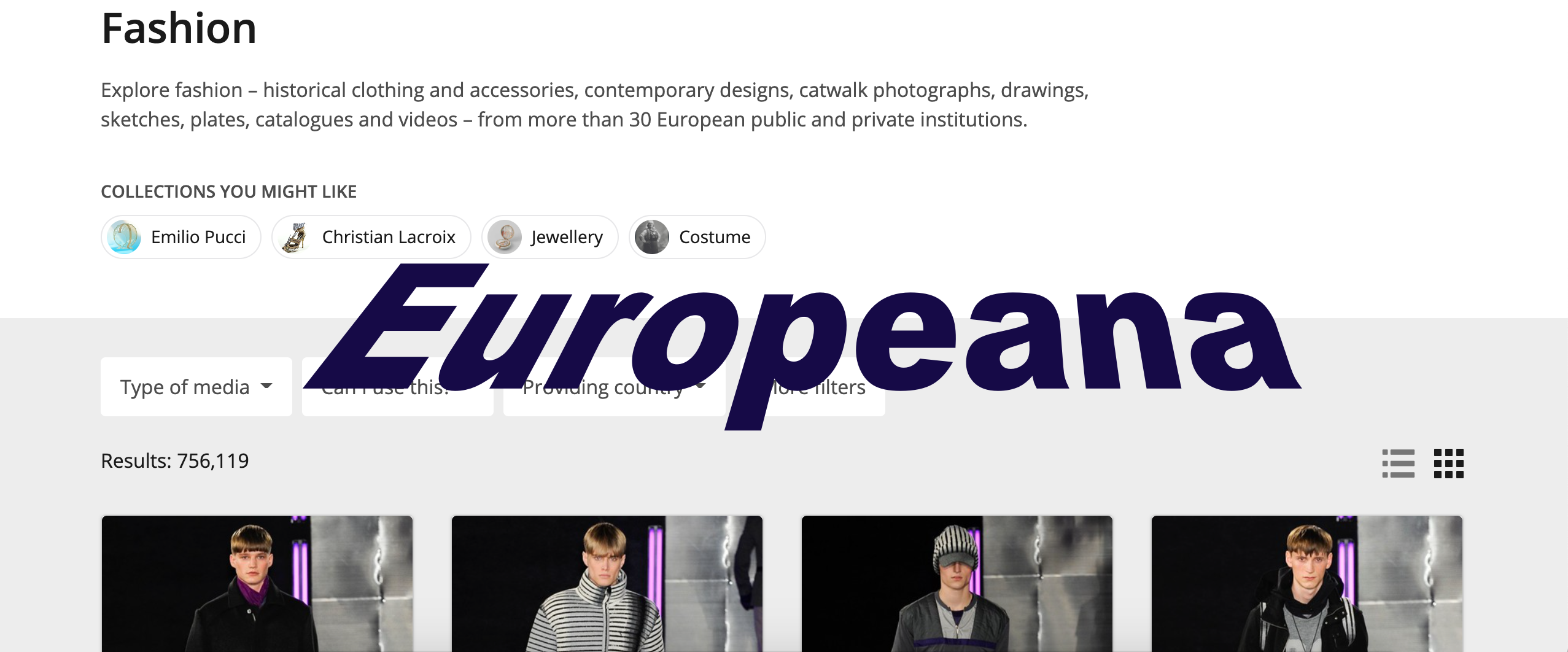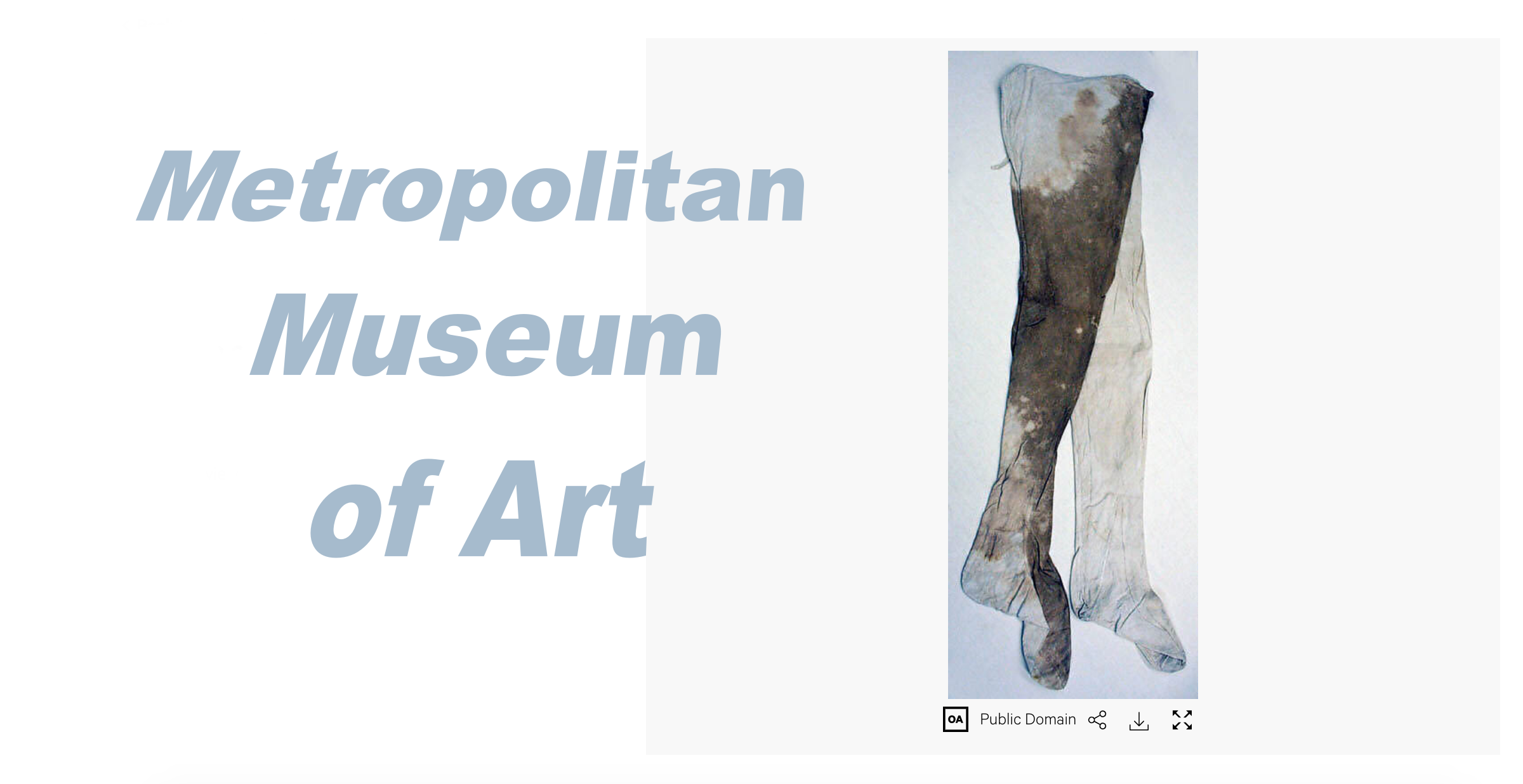 Dear fashion lovers, nerds + students,
Dear fashion lovers, nerds + students,
here are all the online databases to find items, collections, designers and historical objects. For your research, your interest and to make a list of all the (fashion) museums we want to visit once possible. (Part 1)
The Museum at FIT in New York was initially founded in 1969 as „The Design Laboratory and Galleries at FIT“ until the name was changed in 1994. Exhibitions like „The Corset“ or „A Queer History of Fashion“ were held in its white cubes. In the online database of the museum, you can find a wide selection of garments, primarily focused on modern and contemporary women’s collections.
Since 1978, the Kyoto Costume Institute is systematically collecting and preserving „outstanding examples of western clothing through the centuries“ and with it, documents and other items related to the study of fashion. In the digitalised archive you can browse through costumes from the early 17th century to garments from the mid-20th century.
The Risd Museum is located in Rhode Island and was established in 1877 as a place presenting „works of art representing diverse cultures from ancient times to the present“. With exhibitions, such as „The Art and Design of Spider Silk,“ „All of everything: Todd Oldham Fashion“ or „Swagged and Poufed: The Upholstered Body in the Late 19th-Century and Today,“ the museum also acknowledged the importance of engaging with fashion. With over 8.000 digitalised pieces, you can find items like a skirt from India from the 1800s or a pair of Tabi boots from 1990, extensively described, providing you with the information needed for your research.
Europeana is the cooperation of thousands of European archives, libraries and museums „to share cultural heritage for enjoyment, education and research“. In the ‚fashion‘ collection one can find historical clothing as well as contemporary designs. Furthermore, the platform provides access to books, magazines, pictures and illustrations.
The Texas Fashion Collection is part of the College of Visual Arts and Design at the University of North Texas, striving to bridge the academic and popular understandings „of fashion history through research and programming“. In their digitalised archive one can find a whole range of pieces that are continuously enriched. In the digital archive of the Museum of Applied Arts and Science in Sydney, one cannot only find garments such as petticoats, a leather jacket by Jean Paul Gaultier and a silk day dress of the late 18th century, but also fashion plates and sketches. Working with filters and an easy understandable browsing tool, it may provide you with the information needed for your purpose.
In the digital archive of the Museum of Applied Arts and Science in Sydney, one cannot only find garments such as petticoats, a leather jacket by Jean Paul Gaultier and a silk day dress of the late 18th century, but also fashion plates and sketches. Working with filters and an easy understandable browsing tool, it may provide you with the information needed for your purpose. The Victoria & Albert Museum in London was founded in 1852 and, spanning over five centuries, is said to host „the largest and most comprehensive collection of dress in the world“. This collection is also openly accessible online, where one can search for makers, designers or particular objects, while also having the possibility to browse through past exhibitions such as „The Golden Age of Couture: Paris and London 1947 – 1957,“ which was on display in 2008.
The Victoria & Albert Museum in London was founded in 1852 and, spanning over five centuries, is said to host „the largest and most comprehensive collection of dress in the world“. This collection is also openly accessible online, where one can search for makers, designers or particular objects, while also having the possibility to browse through past exhibitions such as „The Golden Age of Couture: Paris and London 1947 – 1957,“ which was on display in 2008. The Zay Initiative Collection describes itself as „an ode to the past“ and „a nod to the future“, dedicating themselves to the art of Arab dress. It is the first digital archive that is documenting and thus, preserving, tradition clothing from the Middle East in a way that makes it accessible for everyone. The digital archive of the Zay Initative consists of a growing collection of more than 1350 items, provided with detailed descriptions which you can study after logging in.
The Zay Initiative Collection describes itself as „an ode to the past“ and „a nod to the future“, dedicating themselves to the art of Arab dress. It is the first digital archive that is documenting and thus, preserving, tradition clothing from the Middle East in a way that makes it accessible for everyone. The digital archive of the Zay Initative consists of a growing collection of more than 1350 items, provided with detailed descriptions which you can study after logging in. The Royal Ontario Museum in Toronto is dedicated to culture, art and natural history and hosts a digital archive, where one can, amongst others, find a vast number of garments, such as the tea gown, an afternoon dress, by Charles Frederick Worth just as a striped men’s coat by Moschino.
The Royal Ontario Museum in Toronto is dedicated to culture, art and natural history and hosts a digital archive, where one can, amongst others, find a vast number of garments, such as the tea gown, an afternoon dress, by Charles Frederick Worth just as a striped men’s coat by Moschino. The Metropolitan Museum of Art in New York hosts an online archive, which shows 9,965 results when typing in „fashion“ into the search bar. Ranging from pictures and drawings to actual objects, one can filter the geographic location, the era as well as the department to make the research process easier.
The Metropolitan Museum of Art in New York hosts an online archive, which shows 9,965 results when typing in „fashion“ into the search bar. Ranging from pictures and drawings to actual objects, one can filter the geographic location, the era as well as the department to make the research process easier.
